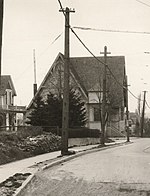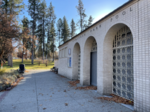Rockwood, Spokane

Rockwood is a neighborhood in Spokane, Washington. It is located on the south side of the city to the southeast of Downtown Spokane and expanding southeasterly from close to the city center. Its proximity to downtown makes it one of Spokane's older neighborhoods, with mature trees lining most of its streets. Due to its location on the hill leading up from the Spokane River Valley, the street grid breaks down in many places around Rockwood. The most notable of these is along the winding Rockwood Boulevard, which bends its way from the northwesternmost corner of the neighborhood through the center and across to the eastern border. It is one of the more affluent neighborhoods in the Spokane community. Many old, large homes are located in Rockwood, and unlike many of the other old neighborhoods surrounding the Spokane city center, the vast majority of the large homes in Rockwood continue to serve as single-family housing.
Excerpt from the Wikipedia article Rockwood, Spokane (License: CC BY-SA 3.0, Authors, Images).Rockwood, Spokane
East Plateau Road, Spokane
Geographical coordinates (GPS) Address Website Nearby Places Show on map
Geographical coordinates (GPS)
| Latitude | Longitude |
|---|---|
| N 47.632472222222 ° | E -117.39447222222 ° |
Address
Hutton Elementary School
East Plateau Road
99203 Spokane
Washington, United States
Open on Google Maps








